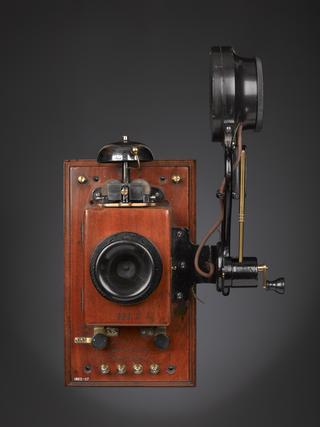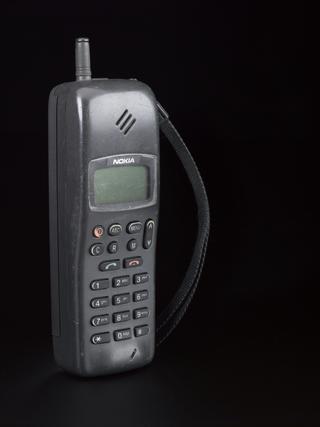
Portable double-needle telegraph and test set, 1850
- Made:
- 1850 in United Kingdom








Portable double-needle telegraph and test set, with removable wooden cover, unknown maker, possibly British, 1850.
This small instrument is both a telegraph instrument and a test set. It was compact enough to be carried by the telegraph lineman when inspecting and repairing telegraph wires. It worked using two pairs of press-buttons at the back of the case. When the instrument was required to work as a galvanometer (an instrument for detecting electric currents), a lever inside the case withdraws the needle stops, allowing the needles to swing fully across the dials. With the ivory stops in position the needles were used to send and receive messages using the standard double-needle code.
Details
- Category:
- Telecommunications
- Object Number:
- 2004-123
- Materials:
- wood (unidentified), metal (unknown) and glass
- Measurements:
-
overall: 165 mm x 220 mm x 137 mm, 3.01kg
- type:
- telegraph
- credit:
- Donated by BT Heritage and Archives




